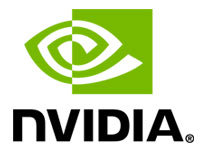
Nvidia recently announced that Toyota will use its Drive PX AI car computer platform for advanced autonomous vehicles slated for introduction over the next few years.
Nvidia is combining breakthroughs in AI and high-performance computing to build Nvidia Drive PX, the brain of the autonomous car, said CEO Jensen Huang at Nvidia’s GPU Technology Conference earlier this month.
“It’s also noteworthy that the [partnership] announcement states that it is to deliver artificial intelligence hardware and software technologies,” noted Ian Riches, Strategy Analytics’ global automotive practice director.
“The software is ultimately as important or valuable [as the hardware],” he told TechNewsWorld.
The Drive PX platform, equipped with the next-generation Xavier System on a Chip — a palm-sized artificial intelligence-based supercomputer designed for use in autonomous vehicles — delivers 30 trillion deep learning operations per second.
It combines data from cameras, lidar, radar and other sensors. It then uses AI to understand the 360-degree environment around the vehicle, localize itself on a high-definition map, and anticipate potential hazards while driving.
The system software receives updates over the air.
“Toyota’s on a path to try to save the car as we know it,” remarked Rob Enderle, principal analyst at the Enderle Group.
“Most everyone else is looking to turn the car into a rolling elevator,” he told TechNewsWorld. “Toyota’s effort to favor its guardian angel concept, which fully enhances a human but doesn’t replace them by default, does a better job of ensuring that car companies like it survive [the shift to autonomous vehicles] than the more popular option, which removes the human driver.”
How the Partners Will Benefit
“Nvidia’s partnership with Toyota is huge,” noted Jim McGregor, a principal analyst at Tirias Research.
Nvidia has automotive certification for infotainment systems but not for control systems, and the partnership will help it get that certification, he told TechNewsWorld.
Toyota also will benefit, said Roger Lanctot, automotive connected mobility director at Strategy Analytics.
“Toyota has a need to make up some lost ground fast, so this [partnership] appears to be the most expedient [move],” he told TechNewsWorld.
That might explain why Toyota opted for Nvidia instead of Renesas Electronics, one of the world’s largest auto semiconductor makers — and one in which Toyota has shares.
“Renesas has been on the low end,” McGregor pointed out. “Toyota was looking for something on the high end, and that company is Nvidia. This will put everyone on notice.”
Getting Into the Autonomous Driving Act
The race is on to get autonomous vehicles into the market, Strategy Analytics’ Lanctot said.
There are no fewer than 263 top movers and shakers, according to Wired, for example.
Still, the Toyota partnership “is confirmation of an early lead that Nvidia seems to be taking in this space,” Strategy Analytics’ Riches observed.
“The Toyota announcement is not research or a test bed,” argued Kevin Krewell, a principal analyst at Tirias Research.
“It’s for real cars that will ship one day,” he told TechNewsWorld. “This means we’re off to the races to autonomous driving vehicles.”
Revving Up Nvidia’s Chances
Nvidia’s processors already are used in Tesla vehicles, Riches pointed out, and they are a core component of Audi’s “zFAS” unit, which is going into production. Further, two major automotive Tier One suppliers — Bosch and ZF — also are going into production with Nvidia-powered modules.
Nvidia “was first to market with a packaged solution, which means they have the greatest potential for a mature cross-OEM offering that has economies of scale,” Enderle said.
Car makers “are coming around to the idea that they’ll need tight standards that cross vendors,” he pointed out, “and that the more commonality that exists, the better their performance/cost ratios, and the lower their potential liability will be.”






















































